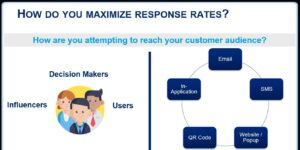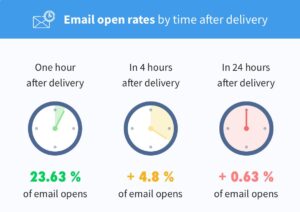In an increasingly competitive marketplace, understanding your customers’ needs and preferences is paramount to achieving success. One of the most effective ways to glean this insight is through customer satisfaction surveys. However, simply sending out a survey isn’t enough; the true power lies in maximizing feedback to ensure you gather meaningful data that drives actionable change. In this article, we will explore proven strategies for effectively distributing these surveys. Implementing these techniques can transform customer feedback into a valuable tool for enhancing your products and services, ultimately leading to greater customer loyalty and business growth.
Understanding the importance of customer feedback

Understanding the importance of customer feedback is crucial for any business aiming to thrive in today’s competitive landscape. Customer feedback serves as a direct line of communication between your brand and your clientele, offering insights that can shape your products, services, and overall customer experience. When you actively seek out and listen to your customers, you not only demonstrate that you value their opinions but also gain a wealth of information about their preferences, pain points, and expectations. Feedback is essential for identifying strengths and weaknesses within your offerings. Positive responses can highlight what you’re doing right, allowing you to reinforce those practices and encourage customer loyalty. Conversely, constructive criticism serves as a valuable tool for improvement. It can uncover issues that may not have been apparent internally, guiding you to make necessary adjustments that enhance satisfaction and drive repeat business.
Moreover, engaging with customer feedback fosters a sense of community and belonging among your clientele. Inviting them to share their thoughts, you empower them to play an active role in shaping your business. This connection can lead to stronger brand loyalty, as customers feel recognized and valued, which, in turn, encourages them to advocate for your brand among their peers. Ultimately, understanding the importance of customer feedback transcends mere data collection; it is about building meaningful relationships and continuously evolving to meet the needs of your audience.
Choosing the right distribution channels

Choosing the right distribution channels for your customer satisfaction surveys is crucial to maximizing response rates and gathering meaningful feedback.
The first step in this process is to understand your target audience and where they are most active. For instance, if your customers frequently engage with your brand via email, sending surveys directly to their inbox can yield high participation rates. Conversely, if your primary interactions occur on social media platforms, consider leveraging those channels to reach your audience.
- Email: One of the most common methods. Personalize the subject line and email content to increase open rates.
- In-app surveys: If you have a mobile app, use in-app surveys to capture immediate feedback.
- On-site surveys: Display surveys on your website after a purchase or browsing session.
- Post-purchase surveys: Send surveys after a customer completes a purchase to gauge satisfaction.
- Social media: Use platforms like Twitter or Instagram to conduct short surveys or polls.
- SMS: Short and sweet surveys can be effective via SMS, but use sparingly to avoid irritation.
- Traditional mail: While less common, traditional mail surveys can be effective for specific target audiences.
Timing your surveys for maximum response rates

Timing is a critical factor when it comes to distributing customer satisfaction surveys. To maximize your response rates, you need to consider the customer journey and identify the optimal moments to reach out for feedback.
- Post-purchase timeframe: Send surveys shortly after a purchase to capture fresh impressions.
- Survey length: Shorter surveys are generally more likely to be completed.
- Day of the week and time of day: Experiment with different days and times to find the best response rates.
- Avoid survey fatigue: Don’t bombard customers with multiple surveys.
Crafting effective and engaging survey questions
Crafting effective and engaging survey questions is a critical component in maximizing feedback from your customers. The way you phrase your questions can significantly influence the quality and quantity of responses you receive. Start by using clear and concise language—avoid jargon or complex phrasing that could confuse respondents. Each question should have a single focus, allowing customers to provide straightforward and honest answers.
Consider employing a mix of question types to keep the survey dynamic and engaging. Closed-ended questions, such as multiple-choice or rating scales, allow for easy analysis and can provide quantifiable data. For example, asking customers to rate their satisfaction on a scale of 1 to 5 can yield quick insights into overall satisfaction levels. However, don’t overlook the value of open-ended questions; these allow customers to express their thoughts in their own words, providing rich, qualitative feedback that can reveal deeper insights into their experiences and expectations.
Additionally, be mindful of the survey’s length. While it might be tempting to gather as much information as possible, lengthy surveys can lead to fatigue and lower completion rates. Aim for a balance—focus on the most critical areas of feedback while keeping the survey brief and to the point. Lastly, personalize your surveys when possible. Addressing customers by name and referencing their specific interactions with your business can create a sense of connection and encourage them to share their genuine thoughts.
Personalization and customization
When it comes to customer satisfaction surveys, personalization and customization are essential strategies that can significantly enhance response rates and the quality of feedback received. Customers are more likely to engage with surveys that feel tailored to their unique experiences and preferences. Consider:
- Personalizing the survey introduction: Address customers by name and reference their purchase history.
- Customizing questions based on customer behavior: Ask relevant questions based on their previous interactions.
- Segmenting survey recipients: Send different surveys to different customer segments.
Analyzing feedback and implementing changes
Once you’ve gathered valuable feedback through your customer satisfaction surveys, the next crucial step is to analyze that feedback and implement meaningful changes. This phase is where you transform raw data into actionable insights, ensuring that your customers feel heard and valued. Start by categorizing the responses, looking for common themes and trends. Are customers consistently praising certain aspects of your product or service? Are there recurring complaints that need addressing? Utilizing data analysis tools can help streamline this process, allowing you to visualize trends and pinpoint areas in need of improvement.
Once you’ve identified key areas that require attention, prioritize them based on factors such as the frequency of mentions and the impact on overall customer satisfaction. It’s essential to formulate a strategic action plan that outlines which changes will be made, who will be responsible for them, and a timeline for implementation.
As you implement these changes, consider setting up follow-up surveys to gauge the effectiveness of your adjustments. This continuous feedback loop ensures that you’re always evolving and improving, ultimately leading to a more satisfying experience for your customers. Remember, the goal is not only to react to feedback but to proactively enhance your offerings based on the insights gained, creating a customer-centric culture that positions your business for long-term success.
Encouraging continuous feedback and building customer relationships
Encouraging continuous feedback is essential for cultivating robust customer relationships and fostering a culture of improvement within your business. Rather than viewing customer satisfaction surveys as a one-time endeavor, consider them a vital part of an ongoing dialogue with your clients. To facilitate this, communicate openly with your customers about the importance of their feedback. Make it clear that their opinions shape not only your products and services but also the overall customer experience.
One effective strategy is to create a feedback loop, where customers receive updates on how their input has influenced changes or enhancements within your business. This not only acknowledges their contribution but also shows that you value their opinions. For instance, if a significant number of customers express a desire for a specific feature or service, implement it and follow up with an announcement highlighting how their feedback played a crucial role in that decision.
Incentivizing participation
Incentivizing participation in customer satisfaction surveys is a powerful strategy that can significantly boost your response rates and enrich the quality of the feedback you receive. People are often busy and may overlook a survey request, but offering an enticing incentive can prompt them to take the time to share their thoughts. Consider these options:
- Discounts or coupons: Reward customers for completing the survey.
- Entry into a contest or giveaway: Create excitement and encourage participation.
- Exclusive offers: Provide access to limited-time promotions or products.
Conclusion
Effectively distributing customer satisfaction surveys is a crucial step in maximizing feedback and enhancing your business’s overall performance. Leveraging the strategies outlined in this guide—such as timing your surveys to coincide with key customer interactions, utilizing multiple channels to reach diverse audiences, and crafting clear, concise questions that encourage thoughtful responses—you can significantly improve response rates and the quality of feedback received.
When customers feel that their opinions are valued and acted upon, it fosters loyalty and trust, creating a stronger connection between them and your brand. Implementing these proven strategies will not only help you gather actionable insights but also empower you to make informed decisions that drive customer satisfaction and ultimately, business success. Embrace the power of feedback, and watch as your efforts lead to a more engaged customer base and a thriving enterprise.

